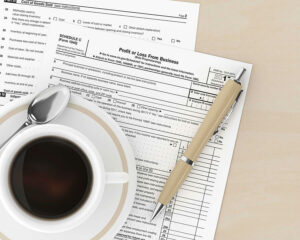
It can be defined as the total number of dollars that a company would have left if it liquidated all of its assets and paid off all of its liabilities. Regardless of how the accounting equation is represented, it is important to remember that the equation must always balance. Below, we present a high-level overview of why accounting ratios are important and some examples of accounting ratios that we may come across in our everyday accounting basic formula professional and personal lives. Often, accounting ratios are calculated yearly or quarterly, and different ratios are more important to different industries. For example, the inventory turnover ratio would be significantly important to a retailer but with almost no significance to a boutique advisory firm. Certified public accounting and management accounting are two of the profession’s most common specializations.
Resources for YourGrowing Business
Therefore, dividends are excluded when determining net income (revenue – expenses), just like stockholder investments (common and preferred). This is how the accounting equation of Laura’s business looks like after incorporating the effects of all transactions at the end of month 1. To calculate the accounting equation, we first need to work out the amounts of each asset, liability, and equity in Laura’s business. In this example, we will see how this accounting equation will transform once we consider the effects of transactions from the first month of Laura’s business. As business transactions take place, the values of the accounting elements change.
Accounting Equation Formula

Shareholders’ equity is the total value of the company expressed in dollars. Put another way, it is the amount that would remain if the company liquidated all of its assets and paid off all of its debts. The remainder is the shareholders’ equity, which would be returned to them. In this form, it is easier to highlight the relationship between shareholder’s equity and debt (liabilities). As you can see, shareholder’s equity is the remainder after liabilities have been subtracted from assets.
Accounting Equation Components
He forms Speakers, Inc. and contributes $100,000 to the company in exchange for all of its newly issued shares. This business transaction increases company cash and increases equity by the same amount. A liability, in its simplest terms, is an amount of money owed to another person or organization. Said a different way, liabilities are creditors’ claims https://www.bookstime.com/articles/cash-short-and-over-account on company assets because this is the amount of assets creditors would own if the company liquidated. Now that we have a basic understanding of the equation, let’s take a look at each accounting equation component starting with the assets. In other words, the total amount of all assets will always equal the sum of liabilities and shareholders’ equity.
- It is the value of the assets that people outside the business can lay claim to.
- Essentially, the representation equates all uses of capital (assets) to all sources of capital, where debt capital leads to liabilities and equity capital leads to shareholders’ equity.
- Your variable cost per unit is basically your cost of goods sold.
- Apple receives $1,300 cash from Harvard for app development services that it has performed.
- Shareholder Equity is equal to a business’s total assets minus its total liabilities.
- Understanding your finances can help you budget, understand, and identify areas for improvement, as well as learn how to properly take on debt in order to help your business grow.
Assets Always Equal Liabilities Plus Equity
For example, when a company borrows money from a bank, the company’s assets will increase and its liabilities will increase by the same amount. When a company purchases inventory for cash, one asset will increase and one asset will decrease. Because there are two or more accounts affected by every transaction, the accounting system is referred to as the double-entry accounting or bookkeeping system. Examples of assets include cash, accounts receivable, inventory, prepaid insurance, investments, land, buildings, equipment, and goodwill. From the accounting equation, we see that the amount of assets must equal the combined amount of liabilities plus owner’s (or stockholders’) equity. The income and retained earnings of the accounting equation is also an essential component in computing, understanding, and analyzing a firm’s income statement.
- A current ratio that is too high, though, can indicate you aren’t managing your capital efficiently, and as a result your business growth could stagnate.
- This business transaction decreases assets by the $100,000 of cash disbursed, increases assets by the new $500,000 building, and increases liabilities by the new $400,000 mortgage.
- Before taking this lesson, be sure to be familiar with the accounting elements.
- The ratios can help provide insights into financial areas that others may be missing or that you can plan to avoid in your own business.
- Accountants record and analyze these transactions to generate an overall picture of their employer’s financial health.
- Its concept is also to express the relationship of the balance sheet items which are assets, liabilities, and owner’s equity.
Basic accounting formula definition

Basic Accounting Equation Mini Quiz:


Example Transaction #2: Purchase of Equipment for Cash
- The $30,000 came from its owner and $20,000 came from the borrowing from the bank.
- The shareholders’ equity number is a company’s total assets minus its total liabilities.
- Small business owners and individual taxpayers can also benefit from a strong working knowledge of basic accounting concepts and terms.
- For the 2x4s in your lumberyard, that occurs when you sell your 6,001st 2×4 in a month, or after you exceed $18,000 in 2×4 sales.
- Get instant access to lessons taught by experienced private equity pros and bulge bracket investment bankers including financial statement modeling, DCF, M&A, LBO, Comps and Excel Modeling.
- The balance sheet reports the assets, liabilities, and owner’s (stockholders’) equity at a specific point in time, such as December 31.